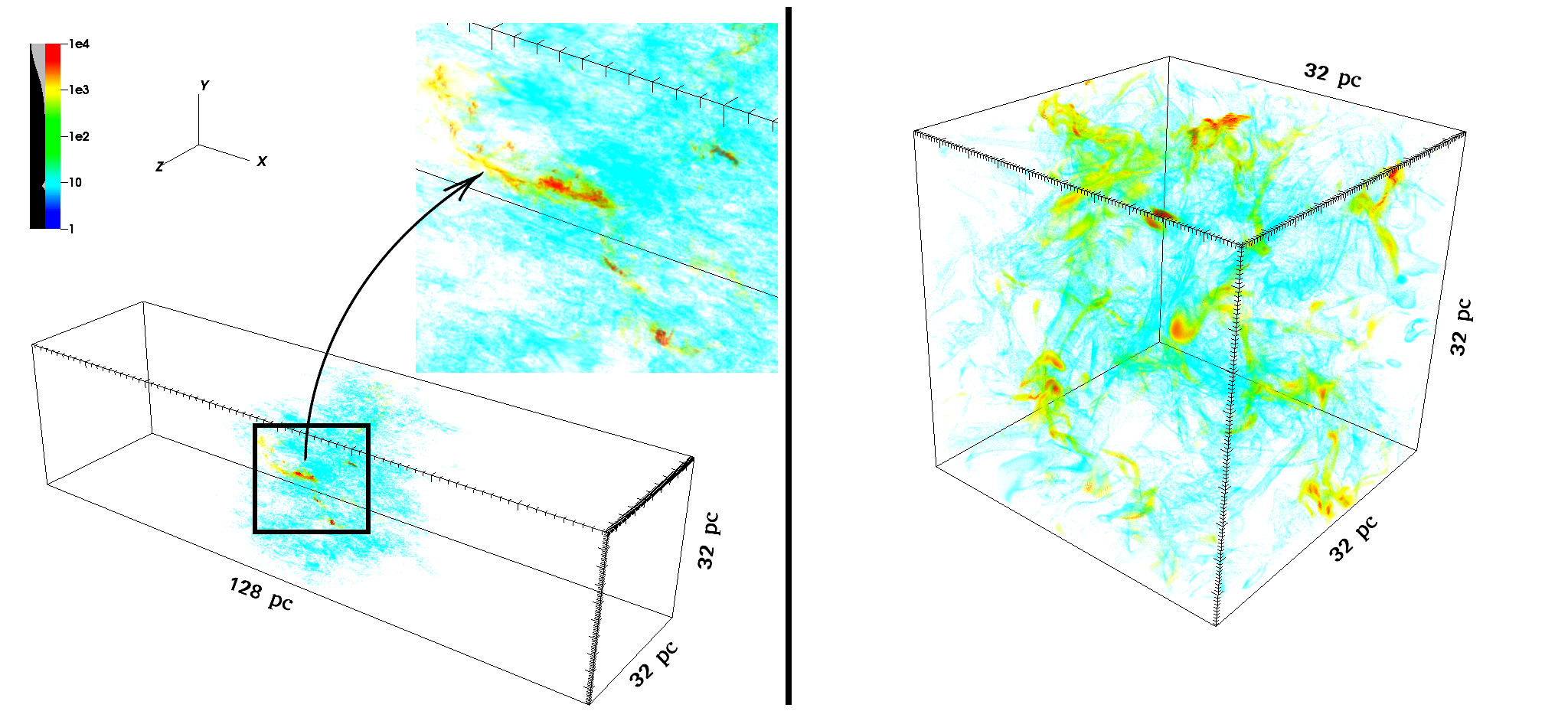Resolution requirements for molecular cloud formation in hydrodynamic simulations including chemistry
Molecular clouds form out of the interstellar medium (ISM) and they are turbulent, highly inhomogeneous structures far from hydrostatic and chemical equilibrium.
Formation of molecular clouds is often simulated in two kinds of numerical models: colliding flows and turbulent box.
Based on 3D hydrodynamic simulations performed in FLASH code,
where the relevant chemical reactions are coupled with dust shielding and H$_2$ and CO self-shielding calculated by an octal tree code,
we investigate the requirements for spatial resolution for the models to reach the convergence in formation of simple, yet important, H$_2$ and CO molecules.
The colliding flow simulations model the turbulent molecular cloud formation via the large scale collision of the warm neutral medium. In such controlled simulations, where turbulence is injected on large scales by incoming supersonic flows, we find that the H$_2$ formation is converged for a spatial resolution of $\Delta x \sim 0.1$~pc, and the CO formation requires $3-4$ times higher resolution for the convergence.
The turbulent box simulations mimic the nature of turbulence by injecting energy on large scales (tens to hundreds of parsec), from which the turbulence cascades down to smaller scales. We find that such artificially driven turbulent environments do not show any sign of convergence in terms of H$_2$ and CO formation up to a spatial resolution of $\Delta x \sim 0.06$~pc. In such simulations, the dynamics of the gas still substantially changes as resolution increases. Since the dynamical history is known to greatly affect the chemical history of the gas, the chemical convergence is not achieved.
